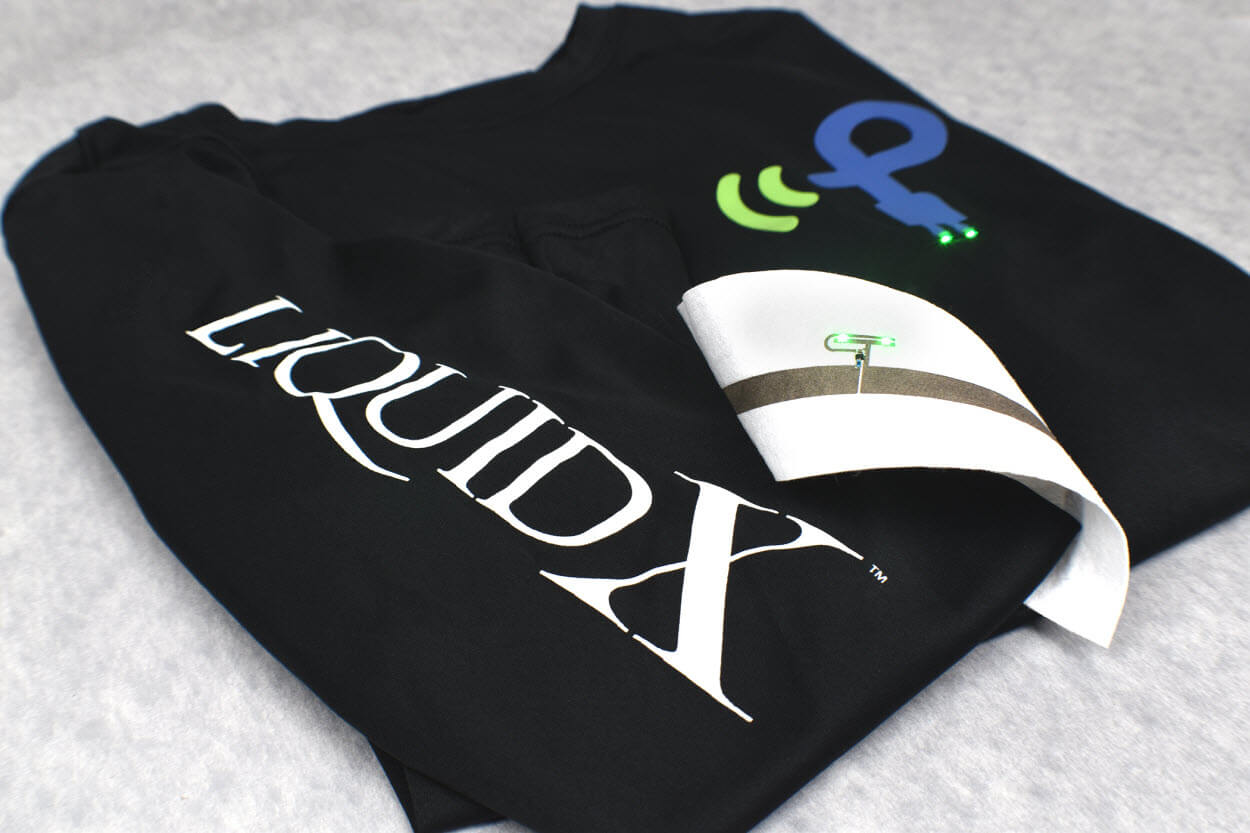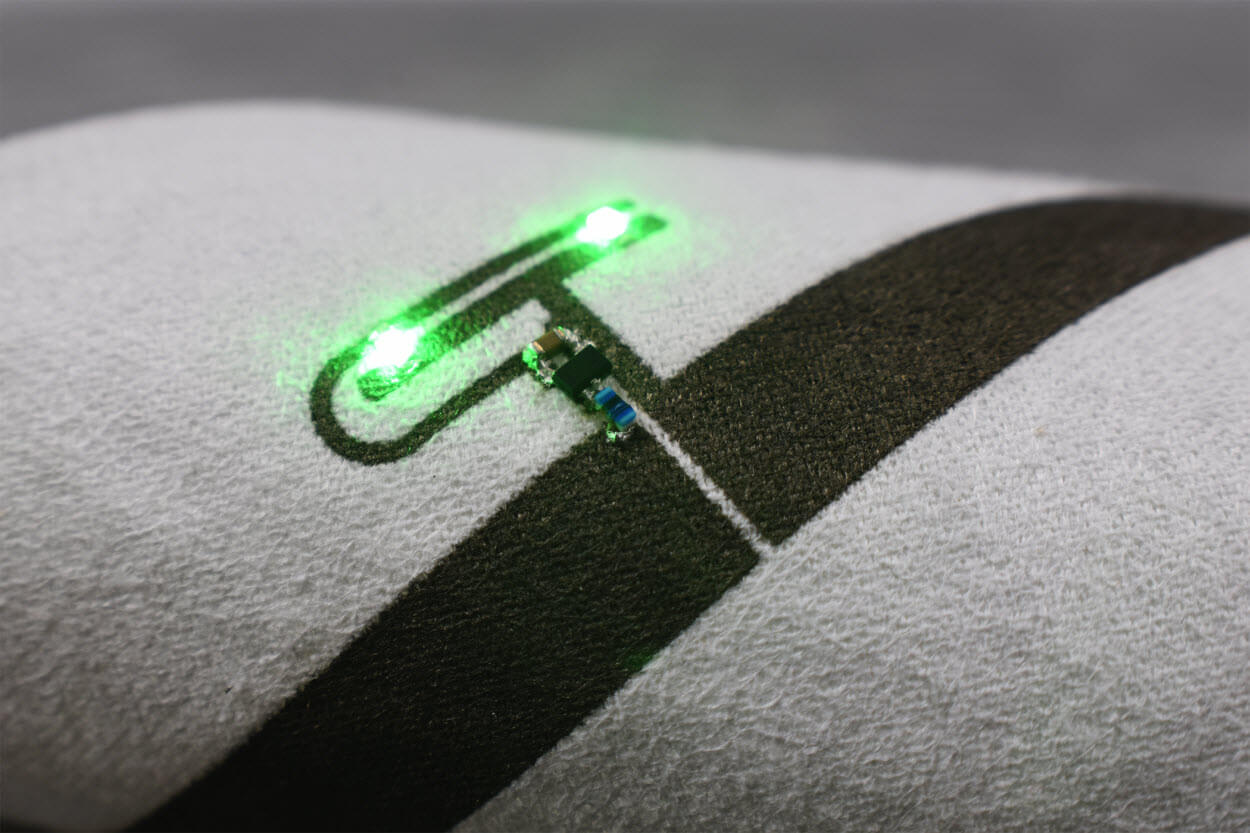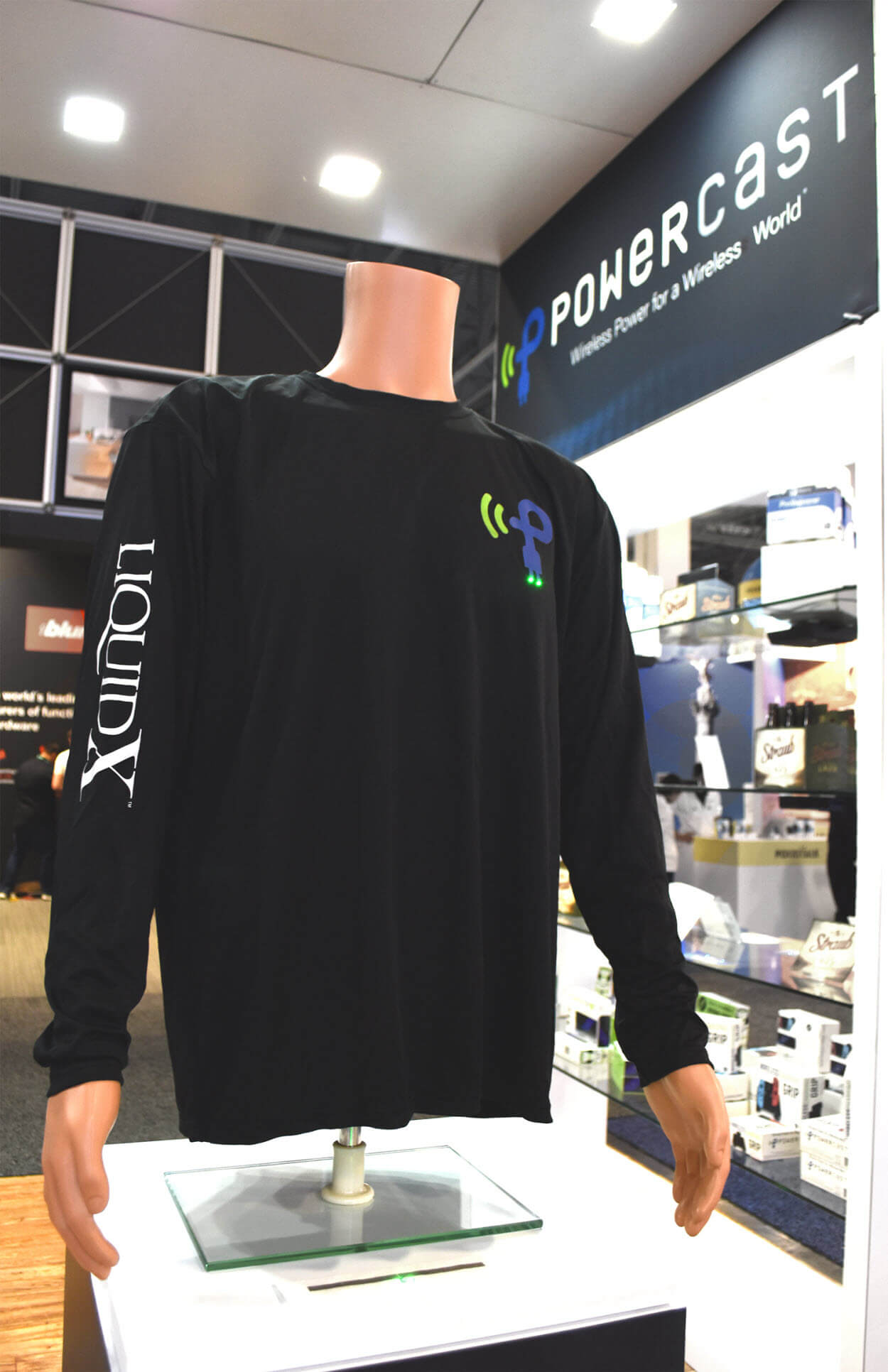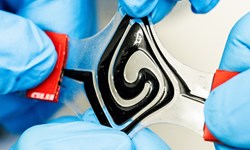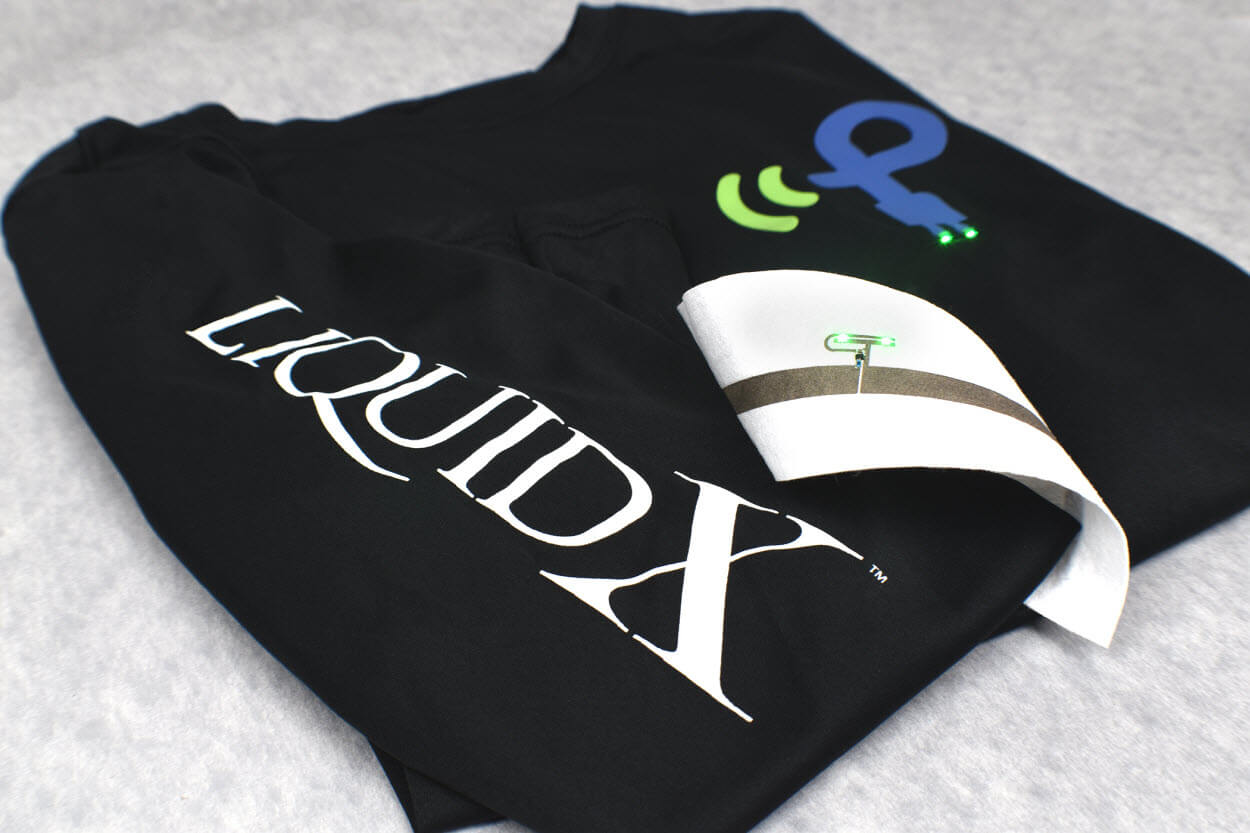
Powercast and Liquid X have collaborated on a printed electronics venture to enable durable, washable e-textiles that seal in wireless charging electronics. Maria Singer from Powercast tells Fiona Haran more about it.
When it comes to e-textiles, partnerships are a sure-fire way to fuel innovation. Through this route, companies and individuals can pool their knowledge and expertise to solve challenges and support the scale-up and commercialisation of products.
A recent collaboration we heard about was between US companies Powercast and Liquid X – the former being a leader in radio-frequency (RF)-based long-range, over-the-air wireless power technology, and the latter an advanced manufacturer of functional metallic inks with prototype-to-production design and manufacturing capabilities. Together, they have developed printed electronics to enable durable, washable e-textiles that seal in wireless charging electrons. Utilising Liquid X’s proprietary ink technology, manufacturers can print circuitry directly onto a garment, add Powercast’s wireless power technology and a battery, and seal this all into the garment during the manufacturing process.
Explaining how the partnership came about, Maria Singer, marketing and sales manager, Powercast Corporation, says: “Liquid X’s prototyping capabilities in the printed electronics field were particularly attractive to us for a project we were working on last year, and their location just a short drive from our headquarters in Pittsburgh was an added bonus.
“In November at the IDTechEx show in Santa Clara, California, we stopped by Liquid X’s booth where they were showcasing a wirelessly powered illuminated garment that they had developed independently using our Powerharvester chips and wireless power transmitter,” she continues. “We were seriously impressed with their prototype and its performance, so we decided to team up for CES 2020 to enhance the garment and showcase their innovation in bringing wireless power into the e-textiles world.”
The garment took the form of a smart athletic shirt prototype that illuminates using printed electronics, embedded power harvesting technology, and LEDs powered over the air up to 10 ft away from the wireless transmitter.
The response to the collaboration was very positive. “Printed electronics manufacturers and smart wearables companies showed a lot of interest in the innovation at CES 2020,” Singer says. “Specifically, we had increased traffic from smart athletic wear and advanced medical wearables companies interested in integrating sensors, BLE communication, and movement monitoring directly into their garments rather than as an add-on.”
Dynamic market
E-textiles is an ‘exciting new market’ for Powercast, having spent the past 15 years bringing wireless power solutions to a range of industrial and commercial sensor devices. This recent development demonstrates the company’s expansion into the consumer space.
Together with Liquid X, the company’s goal is to enable cost-effective manufacturing of durable e-textiles, with battery-powered features such as health and wellness, movement monitoring, or LED-based illumination embedded directly into garments, that consumers can conveniently recharge over the air and wash, without having to remove a battery pack.
Such products are expected to meet a growing need we’re currently seeing for remote health monitoring – something that the coronavirus pandemic has shone a spotlight on.
“Healthcare is as important as ever right now, and if anything, this crisis will push advancements in healthcare technology to the forefront so that we are better prepared when the next crisis occurs,” says Singer.
“With lessons learned about the importance of physical distancing, there is a great opportunity to enable more remote health monitoring using wireless power technology.”
Of course, the capturing of such data often raises concerns over the security of users’ personal details. However, Singer explains that Powercast’s technology is designed to prevent potential data breaches, as well as risks to public health.
“Powercast’s wireless power solutions do not require sophisticated data transfer in order for charging to take place,” she says. “If RF wireless power is available, an enabled device will automatically connect and be wirelessly recharged – similar to solar power. So, there are no data security issues.
“Additionally, our transmitters are all FCC and ISED-approved, meaning that they follow the health and safety guidelines put in place by those regulatory bodies.”
Seamless solutions
The fact that the two companies’ technologies are complementary helped to alleviate any challenges that were encountered in the development of their smart wearables, according to Singer. “Liquid X took on the initial development process independently of Powercast,” she says. “When compared to Powercast’s typical reference designs, Liquid X had to increase the spacing of the traces to account for any ‘bleed’ of the ink since it was applied to fabric rather than a typical PCB [printed circuit board]. Liquid X also chose smaller profile LEDs than Powercast typically uses to enable more seamless integration into garments and other textiles.”
Today’s smart garments often snap electronics onto the garment along with battery packs that users must detach before washing. With the combined technologies of Liquid X and Powercast, now manufacturers can integrate the electronics directly into the garment. First, circuitry is printed on the fabric using Liquid X’s proprietary particle-free ink, including Powercast’s RF wireless-receiving antenna. Next, Powercast’s Powerharvester RF wireless power receiver chip, a battery, and other components are mounted onto the printed traces. Finally, an encapsulant provides a high-strength waterproof bond to seal in the electronics.
To recharge the battery, consumers simply place a Powercast RF transmitter in the closet or drawer where they store their smart wearable. It transmits RF energy over the air to the RF receiver embedded in the wearable, which then converts it to direct current (DC) to charge the battery.
The partners’ next step is to continue to spread the word about their technology, “educating garment manufacturers that they can indeed seal battery-powered features into washable e-textiles,” says Singer.
“We plan to continue demonstrating how our joint technologies will allow garment manufacturers to integrate wireless charging functionality directly into their garments during the manufacturing process, rather than adding it afterwards,” she adds.
“Our goal is to partner with wearables makers to enhance their products by using Liquid X’s proprietary inks and Powercast’s wireless power technology. Wearables are the next stop on our mission to bring real, safe wireless power solutions to the world.”
To learn more about Powercast and Liquid X, visit www.powercastco.com and www.liquid-x.com
Have your say. Join the conversation and follow us on LinkedIn


